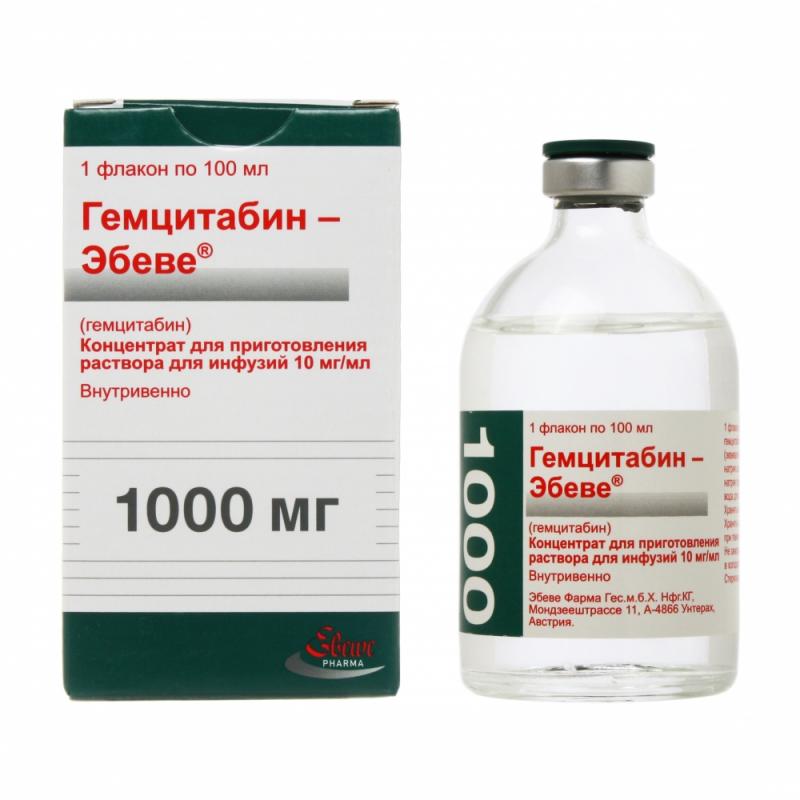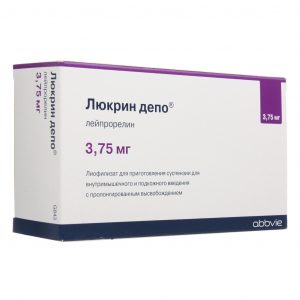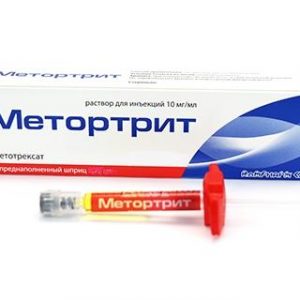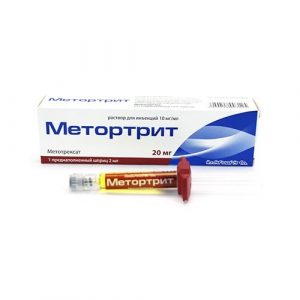Description
Latin name
GEMCITABINE-EBEWE
Release form
A clear solution, colorless or pale yellow.
Pharmacological action
Antitumor agent. It has a cytostatic effect, which is associated with inhibition of DNA synthesis. In the cell, it is metabolized to active diphosphate and triphosphate nucleosides. Diphosphate nucleosides inhibit the action of ribonucleotide reductase, with the participation of which deoxynucleoside triphosphates necessary for DNA synthesis are formed in the cell, which leads to a decrease in their concentration in the cell. Triphosphate nucleosides actively compete for inclusion in the DNA chain, and can also be included in RNA. After the intracellular metabolites of gemcitabine are inserted into the DNA chain, one additional nucleotide is added to its growing chains, which leads to complete inhibition of further DNA synthesis and programmed cell death.
Indications
Non-small cell lung cancer (stage IIIa-IV) late pancreatic carcinomas.
Contraindications
Hypersensitivity to gemcitabine.
Use in pregnancy and lactation
The safety of gemcitabine during pregnancy in humans has not been studied.
Experimental studies have shown that gemcitabine has an embryo- and fetotoxic effect, negatively affects pregnancy and postnatal development.
Gemcitabine should be avoided during pregnancy. Women of childbearing age during the treatment period must use reliable methods of contraception.
If necessary, use during lactation should decide on the termination of breastfeeding.
Special instructions
Has some activity in advanced stages of cancer of the breast, ovaries, kidneys, bladder and prostate gland, small cell lung cancer.
Used with caution in cases of impaired hematopoiesis, impaired liver and / or kidney function. During the treatment period, a peripheral blood picture should be monitored regularly. With the development of a toxic hematological effect, a correction of the dosage regimen is required depending on the degree of leukopenia and thrombocytopenia.
Safety and efficacy of gemcitabine in children have not been studied.
Influence on the ability to drive vehicles and control mechanisms
During treatment, one should refrain from potentially dangerous activities that require increased attention and speed of psychomotor reactions.
Composition of
1 ml contains: gemcitabine 10 mg
Dosage and administration
Set individually, depending on the indications and stage of the disease, the state of the hematopoietic system, anti-tumor therapy regimen.
Side effects
From the hematopoietic system: leukopenia, thrombocytopenia, anemia.
From the digestive system: nausea, vomiting, diarrhea rarely – constipation.
From the urinary system: proteinuria, hematuria rarely – peripheral edema in isolated cases – renal failure.
Dermatological reactions: skin rash, itching, alopecia, stomatitis rarely – peeling, vesicular rash, eczema.
From the laboratory side: a transient increase in the activity of hepatic transaminases, alkaline phosphatase, an increase in plasma bilirubin concentration.
From the respiratory system: rarely – bronchospasm, dyspnea.
From the side of the central nervous system and peripheral nervous system: rarely – drowsiness, weakness, paresthesia.
From the cardiovascular system: rarely – arterial hypotension, pulmonary edema in isolated cases – myocardial infarction, arrhythmias.
Other: flu-like syndrome.
Drug interactions
The risk of development and severity of leukopenia and thrombocytopenia increases after previous treatment with cytostatics.
Deystvuyuschee substances
gemcitabine
Terms and conditions
prescription
dosage form
infusion solution




